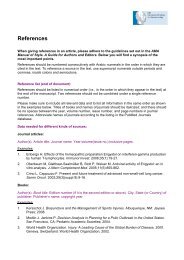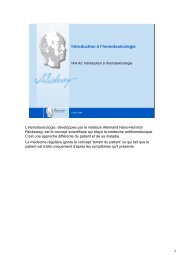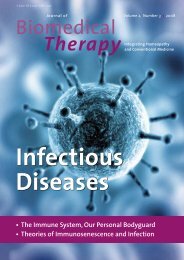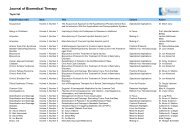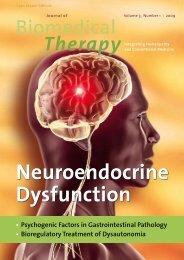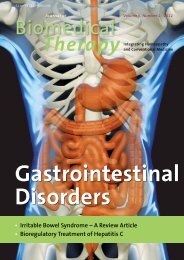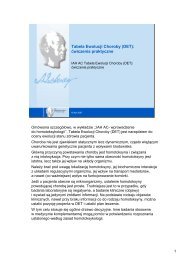Types of Homotoxins
Types of Homotoxins
Types of Homotoxins
Create successful ePaper yourself
Turn your PDF publications into a flip-book with our unique Google optimized e-Paper software.
Chemical poisoning: toxicological criteria<br />
• Bioaccumulation<br />
• Tendency <strong>of</strong> a substance to accumulate in the tissues <strong>of</strong> live<br />
organisms by bioaccumulation<br />
• Related to hydrophobic and lipophylic characteristics<br />
© IAH 2007<br />
9<br />
Paracelsus stated that the doses makes the poison. In this way it looks like that<br />
only a high doses <strong>of</strong> a toxin will create an intoxication status which is not always<br />
true. Even very little amounts <strong>of</strong> chemical loads, repeated over decades, can<br />
create a bioaccumulation that becomes extremely dangerous after a long period.<br />
In the lecture ‘IAH AC Matrix histology and physiology’ we mentioned already that<br />
there are at least 3 ways in which toxins can get incorporated into the structure <strong>of</strong><br />
the extra cellular matrix. This can be due to a positive charge (the ECM structure<br />
is predominantly negative charged), by hydrophilic characteristics or due to pure<br />
mechanic aspects (size <strong>of</strong> the toxin). So, even presented in very small amounts<br />
at the time, bioaccumulation can be the cause that a toxic level is reached, even<br />
if it takes years to do so.<br />
Still now in Europe, older people are found that were active in the flora sector and<br />
have still a high accumulation <strong>of</strong> DDT in the liver, a substance that has been<br />
banned for more than 2 decades now.<br />
9



